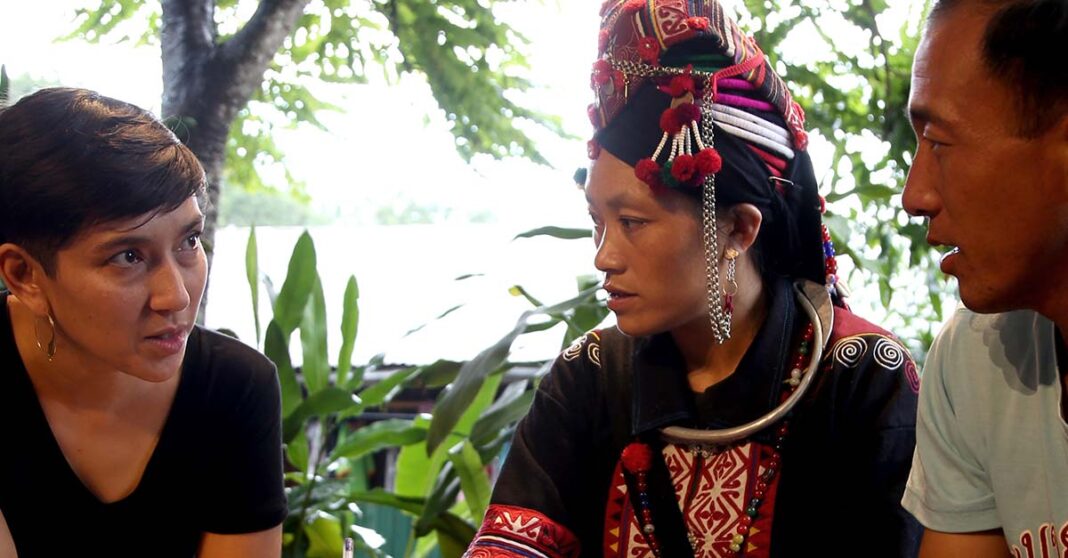Representatives from the Lao government, Lao Handicrafts Association, and cultural heritage stakeholders met on Friday to discuss models for legal action in the protection of Laos’s traditional designs.
The meeting on “Protecting Cultural Intellectual Property Rights in Laos: A Way Forward” was organized by the Traditional Arts and Ethnology Centre (TAEC) and the Lao Handicrafts Association, with support from VOICE. The event drew panellists and participants from the Ministry of Industry and Commerce, the Ministry of Information, Culture and Tourism, as well as handicraft businesses, young designers, village artisans, embassies, and non-governmental organisations.
The meeting agreed that protecting the traditional designs of Laos’s ethnic groups is an urgent priority, kicking off with a video about the importance of traditional cultural knowledge in Laos, particularly for rural crafts producers and the tourism sector.
It also highlighted a prominent case in which fashion company Max Mara copied designs from the Oma ethnic group of Phongsaly.

Mr. Saybandith Sayavongkhamdy, of the Department of Intellectual Property (DIP), helped define important legal terms to refer to traditional designs and explained why tools like copyright and trademarks have limited use for traditional handicrafts.
Ms. Thongkhoun Soutthivilay, Co-Director of TAEC, was in attendance to present the project that TAEC has been implementing with the Oma, documenting their traditional designs in a database. This database will then be copyrighted by the Department of Intellectual Property, to help protect the information.
“We should replicate this model for all the artisan communities of Laos, to ensure that they do not get plagiarised as the Oma did,” said Ms. Thongkhoun.

The panel discussion that followed fielded questions such as how small businesses who work with artisans can protect their own designs, as well as support the artisans.
The meeting ended with a joining of hands between Ms. Souvitta Phaseuth, Lao Handicrafts Association, Mr. Samlee Boudsady, Department of Industry and Handicrafts, Mr. Phanthanasone Phinpakhakdy, Department of Mass Culture, Mr. Saybandith Sayavongkhamdy, of the Department of Intellectual Property, and Ms. Thongkhoun Soutthivilay, Co-Director of the Traditional Arts and Ethnology Centre.
They each pledged to work together to protect the cultural intellectual property of Laos’s ethnic groups due to its importance to the country’s heritage, rural livelihoods, and identity.
More information can be found in English and Lao at www.taeclaos.org/oma and in Lao language on the Facebook group “ປົກປ້ອງລາຍດັ້ງເດີມຂອງປະເທດລາວ” (Protect the Traditional Designs of Laos).



